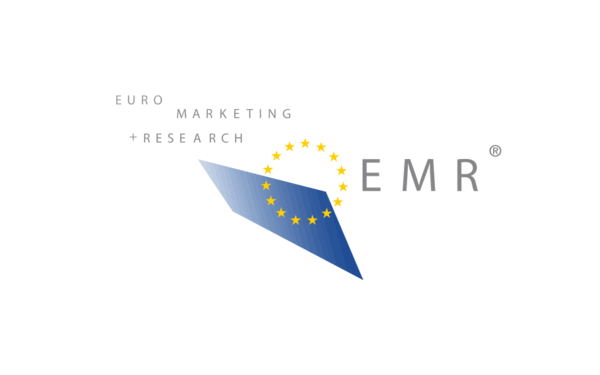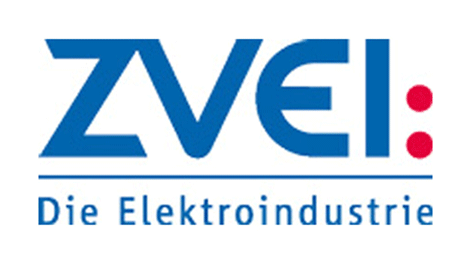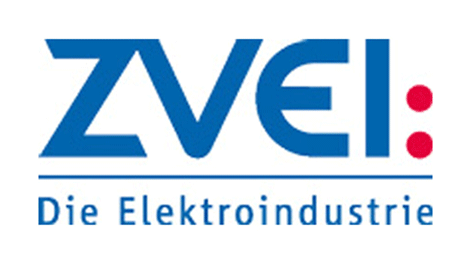ZVEI – Survey shows: Population supports ongoing smart meter rollout
- IT security and data protection for smart meters are top priorities
- Majority wants uniform smart meter solution in Germany
A recent Civey survey commissioned by the ZVEI (German Electrical and Electronic Manufacturers’ Association) shows that over 80 percent of Germans attach the highest importance to IT security and data protection when it comes to smart meters – regardless of age or region.
“The result confirms that we are setting the right standards for the rollout in Germany,” says Wolfgang Weber, Chairman of the ZVEI Management Board. “With the smart meter gateway, we guarantee a secure communications infrastructure for energy data transmission and meet the highest security standards.”
With its rollout design using so-called intelligent metering systems (smart meters and smart meter gateways), Germany is laying the foundation for a cyber-secure smart grid that consolidates market- and grid-oriented consumption. The installation of intelligent metering systems enables the necessary granular measurement of electricity consumption as well as the recording of local grid conditions and actual feed-in.
“This enables dynamic electricity tariffs and strengthens grid stability – consumers can optimize costs, and grid operators can manage bottlenecks early on,” explains Weber.
Uniform standards instead of a patchwork
The survey also clearly shows that the German population places as much value on efficiency and foresight in implementation as on costs. 60 percent want uniform smart meter systems to avoid regional differences and expensive retrofitting. Furthermore, almost half of respondents (43 percent) support the possibility of grid operators contributing to the stabilization of the power grid with the help of smart meters.
Weber therefore warns: “Please, no smart meter light! These discussions about supposedly quick alternatives must finally be put to rest. Parallel technical solutions offer neither advantages nor economies of scale in terms of costs, efficiency, and data quality. We need uniform systems across Germany as the basis for a stable power supply.”
Bringing the smart meter rollout out of the niche
Respondents are divided when it comes to weighing costs, security, and stability: One-third (34%) would choose more expensive, secure devices, but almost as many (31%) would choose a cheaper, less secure model, and another third is undecided. At the same time, one in five (22%) is already considering choosing a tariff with variable network charges when switching providers next.
“These figures show that the rollout needs even more transparency and more information,” demands Weber.
It is still treated as a complex, niche topic.
“Yet it forms the technical core of the nationwide building infrastructure for an uninterrupted, cyber-secure, integrated, and price-optimized power supply.”
This understanding must be achieved among the population for the agreed control rollout.
On behalf of the ZVEI (German Electrical and Electronic Manufacturers’ Association), Civey surveyed approximately 5,000 German citizens online from August 25 to 27, 2025. The results are representative of the German population aged 18 and over, taking into account the statistical error of an average of 2.5 percentage points.
SourceZVEI
EMR Analysis
More information on ZVEI: See the full profile on EMR Executive Services
More information on Wolfgang Weber (Chief Executive Officer and Chairman of the Executive Board, ZVEI): See the full profile on EMR Executive Services
More information on Dr. Gunther Kegel (President, ZVEI till May 20, 2026 + Chairman of the Management Board, Pepperl+Fuchs GmbH + Chief Executive Officer, Pepperl+Fuchs SE): See the full profile on EMR Executive Services
More information on Civey: https://civey.com/ + Civey stands for Citizen Survey. Founded in 2015, the company has fundamentally transformed market and opinion research: As a technology company, Civey provides representative snapshots and monitoring data that help companies, our society, and every individual better understand markets, trends, and positions. The company continuously collects and analyzes data in real time – at the interface between traditional statistics and modern artificial intelligence. Clients benefit from the speed, reliability, and depth of data in Germany’s largest open-access panel.
More information on Janina Mütze (Co-Founder and Member of the Board, Civey): https://civey.com/impressum + https://www.linkedin.com/in/janinamuetze/
More information on Gerrit Richter (Co-Founder and Chief Executive Officer, Civey): https://civey.com/impressum + https://www.linkedin.com/in/gerrit-richter/
EMR Additional Notes:
- Advanced Metering Infrastructure (AMI):
- https://www.energy.gov/sites/prod/files/2016/12/f34/AMI%20Summary%20Report_09-26-16.pdf
- Advanced metering infrastructure (AMI) is an integrated system of smart meters, communications networks, and data management systems that enables two-way communication between utilities and customers.
- The system provides a number of important functions that were not previously possible or had to be performed manually, such as the ability to automatically and remotely measure electricity use, connect and disconnect service, detect tampering, identify and isolate outages, and monitor voltage.
- Combined with customer technologies, such as in-home displays and programmable communicating thermostats, AMI also enables utilities to offer new time-based rate programs and incentives that encourage customers to reduce peak demand and manage energy consumption and costs.
- Smart Metering:
- Smart metering is the monitoring of resource consumption, such as energy, water, gas, etc., through modern metering devices connected to the Internet via IoT technology.
- Advantages: Eliminates manual monthly meter readings. Monitors the electric system in real time. Encourages more efficient use of power resources. Provides responsive data for balancing electric loads while reducing blackouts. Enables dynamic pricing.
- Information Technology (IT) & Operational Technology (OT):
- Information Technology (IT):
- Refers to anything related to computer technology, including hardware and software. Your email, for example, falls under the IT umbrella. IT forms the technological backbone of most organizations and companies by managing data, communications, and business processes. These devices and programs have little autonomy and are updated frequently.
- Operational Technology (OT):
- Refers to the hardware and software used to change, monitor, or control physical devices, processes, and events within a company or organization. This form of technology is most commonly used in industrial settings, where these systems are engineered for safety, reliability, and precision control. An example of OT includes SCADA (Supervisory Control and Data Acquisition).
- => The main difference between OT and IT devices: OT devices control the physical world, while IT systems manage data.
- Information Technology (IT):
- Cybersecurity:
- Computer security, cybersecurity, or information technology security is the protection of computer systems and networks from information disclosure, theft of or damage to their hardware, software, or electronic data, as well as from the disruption or misdirection of the services they provide.
- Grid, Microgrids, DERs and DERM’s:
- Grid / Power Grid:
- The power grid is a network for delivering electricity to consumers. The power grid includes generator stations, transmission lines and towers, and individual consumer distribution lines.
- The grid constantly balances the supply and demand for the energy that powers everything from industry to household appliances.
- Electric grids perform three major functions: power generation, transmission, and distribution.
- The power grid is a network for delivering electricity to consumers. The power grid includes generator stations, transmission lines and towers, and individual consumer distribution lines.
- Microgrid:
- Small-scale power grid that can operate independently or collaboratively with other small power grids. The practice of using microgrids is known as distributed, dispersed, decentralized, district or embedded energy production.
- Smart Grid:
- Any electrical grid + IT at all levels.
- Micro Grid:
- Group of interconnected loads and DERs (Distributed Energy Resources) within a clearly defined electrical and geographical boundaries witch acts as a single controllable entity with respect to the main grid.
- Distributed Energy Resources (DERs):
- Small-scale electricity supply (typically in the range of 3 kW to 50 MW) or demand resources that are interconnected to the electric grid. They are power generation resources and are usually located close to load centers, and can be used individually or in aggregate to provide value to the grid.
- Common examples of DERs include rooftop solar PV units, natural gas turbines, microturbines, wind turbines, biomass generators, fuel cells, tri-generation units, battery storage, electric vehicles (EV) and EV chargers, and demand response applications.
- Small-scale electricity supply (typically in the range of 3 kW to 50 MW) or demand resources that are interconnected to the electric grid. They are power generation resources and are usually located close to load centers, and can be used individually or in aggregate to provide value to the grid.
- Distributed Energy Resources Management Systems (DERMS):
- Platforms which helps mostly distribution system operators (DSO) manage their grids that are mainly based on distributed energy resources (DER).
- DERMS are used by utilities and other energy companies to aggregate a large energy load for participation in the demand response market. DERMS can be defined in many ways, depending on the use case and underlying energy asset.
- Platforms which helps mostly distribution system operators (DSO) manage their grids that are mainly based on distributed energy resources (DER).
- Grid / Power Grid:
- Feed-in Tariff (FIT):
- Policy designed to support the development of renewable energy sources by providing a guaranteed, above-market price for producers.
- Also known as standard offer contract or advanced renewable tariff, are policy mechanisms that are designed to accelerate investment in renewable energy systems and technologies. They achieve this by offering long-term contracts to renewable energy producers, typically based on the cost of generation of each different technology. Technologies like wind power, for instance, are awarded a lower per-kWh price, whereas technologies like solar, photovoltaic, and tidal or wave power are currently offered a higher price, reflecting their higher costs.
- In addition, FiT often include “tariff degression,” a mechanism according to which the price (or tariff) ratchets down over time. This is done to track and encourage technological cost reductions. The goal of FiT is ultimately to offer cost-based compensation to renewable energy producers, providing the price certainty and long-term contracts that help finance renewable energy investments


